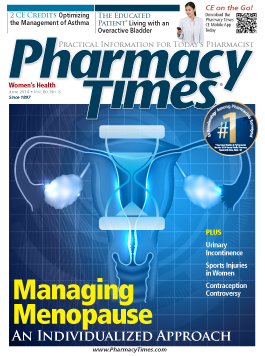Publication
Article
Pharmacy Times
EMRs, EHRs, PHRs: Meshing Systems Key to e-Health Records
Author(s):
It almost goes without saying: when it comes to health care, integration is key.
That convention is also true in the world of electronic health. The ability for personal health records (PHRs), electronic health records (EHRs), and electronic medical records (EMRs) to work on multiple platforms is indispensable for meshing information, and for encouraging collaboration, Shelly Spiro, RPh, FASCP, executive director at the Pharmacy Health Information Technology (HIT) Collaborative, said in an interview with Pharmacy Times.
Although EMRs and EHRs are not particularly new tech tools, they present an added impetus to move away from faxes, phone calls, and other methods of record keeping that are not computer based and easily shared, she noted.
“I talk to many pharmacists across the country, and I ask them how are they documenting their interactions,” Spiro said as she explained one of the key points behind using the different e-record types.
The Pharmacy HIT Collaborative, formed in fall 2010, works directly with health information technology stakeholders to promote technology use in pharmacies while also working with system designers and vendors to ensure that their products meet necessary standards and meet pharmacists’ needs.
“Right now, a lot of our systems are dispensing-focused,” Spiro said. “Pharmacists should be working with their system vendors to see that they have the functionality to receive EHRs. There has to be a clinical portion of that system. There are modular types of systems out there that will interface with their dispensing systems.”
In fact, the ability to integrate with various platforms is a capability pharmacists should request from their system vendors, she added.
The Pharmacy HIT Collaborative works directly with the organizations developing integration standards to help define what they need for integration. As a result, the collaborative can help ensure that the software used to create the medical chart that becomes the EMR can have information pulled from it to create the EHR—and that that information can be sent to other systems for logging there, or for use in electronic PHRs.
Many of the systems use structured document records to share information between platforms. The idea is to collect relevant information in a way that works with the pharmacist’s existing system, and also with other health care providers’ systems.
Existing software may appear convenient and cross-platform, but Spiro and HIT discourage using common programs like Microsoft Word, Excel, or Access to record patient information. Many of the programs do not have the security features needed to comply with Health Insurance Portability and Accountability Act requirements, and the usual methods for transmitting those items might not be secure.
That lack of security can present a particular problem as PHRs become more widely used. Although the records have not been adopted at levels that the Pharmacy HIT Collaborative would prefer—Spiro has seen them used by specialists and in patients with complex conditions—they may become more prevalent as Accountable Care Organizations (ACOs) become more prominent.
As Spiro notes, ACOs’ success hinges, in part, on technology.
“You cannot have an ACO without having good technology,” Spiro said. “In order to meet the standards, you have to have technology. You need to have your information available to account for those patients.”
“If pharmacies are going to participate in the care of the patient, they might be participating in an ACO,” she added. “Medications are a big part of it. The more complex the patient, the more the pharmacist is going to be involved.”







